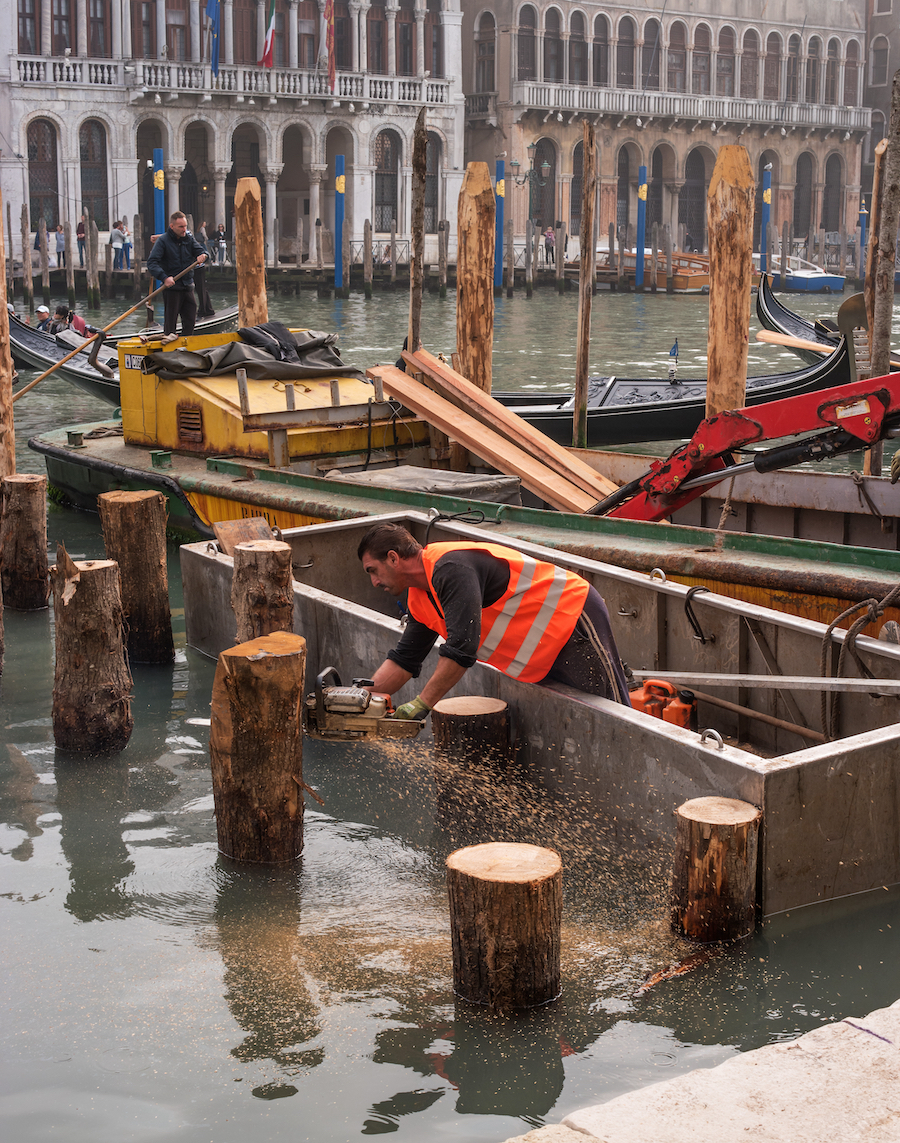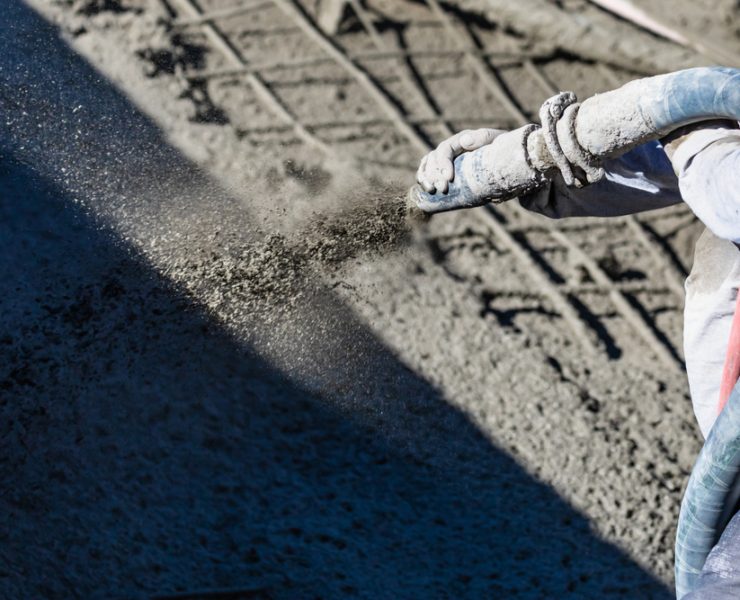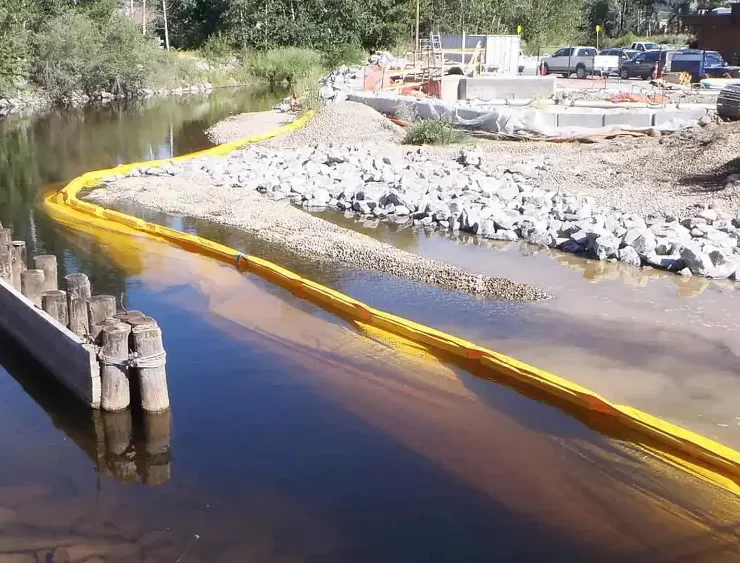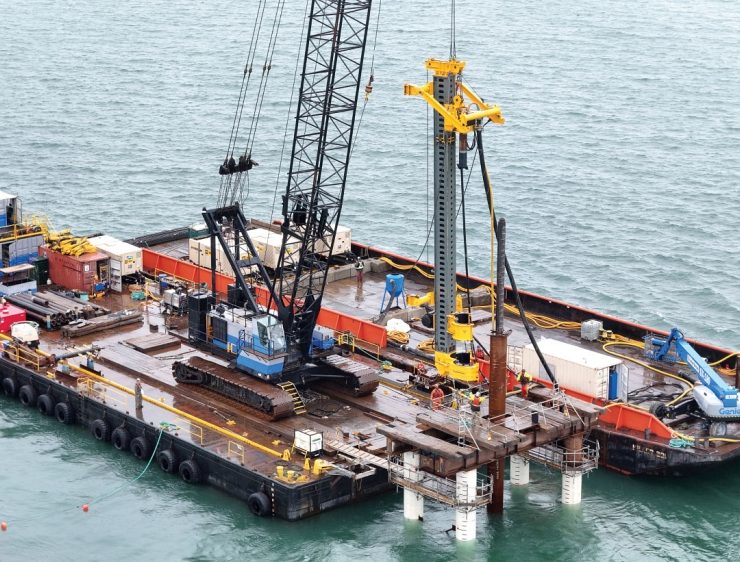Chainsaw Safety for Marine Contractors


View the complete article here.
Whether it’s for the construction of a dock or any other type of construction (or demolition), using a chainsaw safely is an absolute necessity.
There are serious consequences for using a chainsaw improperly—such as serious injury or death—so we highly recommend that you read the manufacturer’s manual before operating any type of chainsaw.
Work Area Safety
- Ensure the area is marked and that there are no people in the immediate area. Other
workers should be twice as far as the height of the trees being felled.
- Identify and clear any obstacles that may interfere with stable footing, cutting, or impede retreat/movement paths.
- Identify electrical lines in and near the work area.
- Identify “hangers” and “widow-makers”— branches that may dislodge and fall into the work area from above.
Before Starting the Chainsaw
- Check controls, chain tension and all bolts and handles to ensure they are functioning properly and adjusted according to the manufacturer’s instructions.
- Ensure the chainsaw engine is the appropriate size for the project.
- Fuel the saw at least 10 feet away from ignition sources.
- Check the fuel container to ensure it:
- Is metal or plastic.
- Does not exceed 5 gallons in capacity.
- Is approved by the Underwriters Laboratory, FM Approvals (FM), or the Department of Transportation (DOT).
- Ensure electric chainsaws are tested and certified by a Nationally Recognized
Testing Laboratory (NRTL). Extension cords shall be sized according to the chainsaw manufacturer’s instructions.
- Check that all safety devices are working properly.
- Do not operate a chainsaw that is damaged or has disengaged safety devices.
- Look for nails, spikes, or other metal objects prior to cutting.
- Clear away dirt, debris, small tree limbs, and rocks from the chainsaw’s path.
- Never work alone.
- Use proper personal protective equipment (PPE).
 Operating the Chainsaw
Operating the Chainsaw
- Always follow the manufacturer’s instructions for chainsaw operation and maintenance.
- Start the saw on the ground or another firm support with the brake engaged.
- Keep both hands on the handles and maintain secure footing.
- Plan where the object will fall; ensure that the fall area is free of hazards; and avoid felling an object into other objects.
- Plan the cut; watch for objects under tension; use extreme care to bring objects safely to the ground.
- Be prepared for kickback; avoid cutting in the kickback zone and use saws that reduce kickback danger (chain brakes, low kickback chains, guide bars, etc.).
- Do not cut directly overhead.
- Shut off or release throttle prior to retreating.
- Shut off or engage the chain brake whenever the saw is carried more than 50 feet or across hazardous terrain.
- Take breaks as needed as fatigue increases the risk for accident and injury.
Operate Within Your Skill Level
- Accidents can happen when chainsaw operators perform tasks that are beyond their capabilities or training level. Higher risk operations may include:
- Trees on unstable ground or steep slopes.
- Trees with a heavy lean.
- Trees with stem or root rot.
- Trees known to split.
- Operating a chainsaw above shoulder height or above ground level, such as from a ladder or tree.
Personal Protective Equipment Requirements
Proper personal protective equipment (PPE) can prevent or lessen the severity of injuries to workers using chainsaws. Employers must ensure that PPE is in good working condition prior to starting work.
- Employers must provide and ensure workers properly use PPE, including:
- Head protection, such as a hard hat
- Hearing protection sufficient to reduce noise exposure to 90 decibels or less
- Eye/Face Protection such as safety glasses.
- Appropriate protective footwear per OSHA standards.
- Leg protection such as work pants or chaps.
- Work gloves.
- Fall protection as necessary.
- PPE should be used in conjunction with engineering and administrative controls whenever possible.
Training
Employers of workers using chainsaws must ensure that their employees are able to perform tasks safely. If using chainsaws, training and job hazard analyses should assist workers in anticipating and avoiding job-related injuries.
Train workers about:
- Specific work procedures, practices and requirements, including general and specific safety and health hazard recognition, prevention, and control.
- How to safely perform assigned work tasks.
- The specific hazards and controls associated with each task.
- How to safely use, operate, and maintain tools, machines and vehicles which workers may use or encounter on the work site.
- Applicable OSHA standards, such as those for logging, PPE, bloodborne pathogens and medical services and first aid.
This is one in a series of informational fact sheets highlighting OSHA programs, policies or standards. It does not impose any new compliance requirements. For a comprehensive list of compliance requirements of OSHA standards or regulations, refer to Title 29 of the Code of Federal Regulations. This information will be made available to sensory-impaired individuals upon request. The voice phone is (202) 693-1999; teletypewriter (TTY) number: 1-877-889-5627.
View the complete article here.
Why is chainsaw safety important for marine contractors?
Chainsaw safety is important for marine contractors because mishandling can lead to serious injuries or even fatalities. The marine environment presents unique challenges like slippery surfaces and water-related risks, which can make the use of chainsaws even more hazardous.
What are some chainsaw safety tips for marine contractors?
Marine contractors should wear appropriate personal protective equipment, including safety glasses, sturdy boots, and chainsaw chaps. They should also ensure the chainsaw is in good working condition and use proper techniques when cutting. Regular training on chainsaw safety is essential to ensure workers are aware of the potential hazards and how to avoid them.














 Operating the Chainsaw
Operating the Chainsaw


